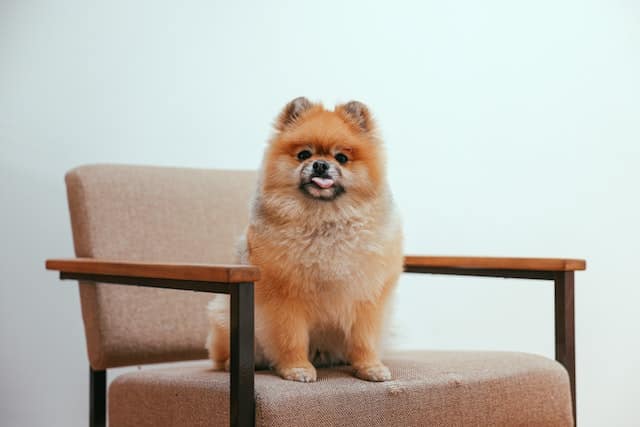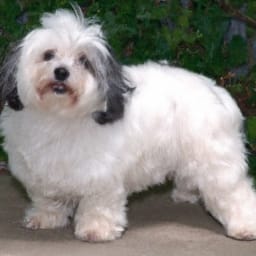English Pointer Shedding: Why Do English Pointers Shed?
If you own an English Pointer, you may have noticed that they have a tendency to shed quite a bit. But have you ever wondered why? In this article, we will explore the reasons behind English Pointers shedding and provide you with some helpful tips on how to manage their shedding effectively. So, if you’re a proud owner of an English Pointer or considering getting one, this article is a must-read for you!
The English Pointer Breed: An Introduction
The English Pointer is a popular breed known for its athleticism, grace, and intelligence. Originating in England, this breed was primarily developed for hunting and pointing game birds. English Pointers have a distinctive appearance, with a lean and muscular body, a sleek coat, and a characteristic pointing stance. But like many other breeds, English Pointers are prone to shedding, which can be a concern for owners. In this article, we will explore the shedding process in English Pointers, factors that influence shedding, grooming techniques to manage shedding, the impact of nutrition on shedding, common health conditions that contribute to shedding, and how to reduce excessive shedding through proper care and professional grooming.
Breed Overview
English Pointers are medium-sized dogs with a well-defined, elegant build. They have a proportionate and balanced body structure that allows them to move with agility and speed. This breed has a medium-length coat that lies close to the body, accentuating their sleek appearance. English Pointers have a refined head with a slightly tapering muzzle, expressive eyes, and ears that hang close to the head. They have a kind and intelligent expression, which adds to their charm. English Pointers are highly active and energetic dogs, requiring plenty of exercise and mental stimulation to thrive.
Physical Characteristics
English Pointers have several physical characteristics that make them unique among dog breeds. One of the most striking features of this breed is their coat. English Pointers have a short, dense, and smooth coat that provides them with protection against harsh weather conditions. The coat can come in a variety of colors and combinations, including liver, lemon, black, or orange, often with white markings. The coat’s colors and patterns can vary widely, making each English Pointer’s appearance truly distinctive.
Temperament
English Pointers are known for their friendly and sociable nature. They are intelligent, affectionate, and eager to please, making them excellent companions and family pets. This breed is highly trainable and thrives on positive reinforcement methods. English Pointers are generally good with children and get along well with other dogs when properly socialized. They have a strong instinct for hunting and pointing, which may result in a high prey drive. Early socialization and training are essential to channel their energy and instincts in appropriate ways.
Understanding Shedding in English Pointers
The Shedding Process
Shedding is a natural process that allows dogs to get rid of old or damaged hair and replace it with new growth. English Pointers, like all dogs, shed to some extent. Shedding is influenced by various factors, including genetics, environment, nutrition, and overall health. The shedding process in English Pointers typically occurs year-round, but certain factors can affect the intensity and frequency of shedding.
Normal Shedding Patterns
English Pointers have a moderate shedding pattern. They tend to shed consistently throughout the year but may experience heavier shedding during certain seasons. Shedding can vary between individual dogs, with some English Pointers shedding more than others. Regular grooming and maintaining a healthy coat can help manage shedding and minimize the amount of loose hair in the environment.
Factors that Influence Shedding
Several factors can influence shedding in English Pointers. One of the primary factors is the season. Like many other breeds, English Pointers may experience increased shedding during the spring and fall as they transition between winter and summer coats. Temperature and humidity also play a role, as dogs may shed more in warmer months to regulate their body temperature. Exposure to sunlight can affect shedding, as increased sunlight exposure can trigger the shedding of the undercoat.
Genetic Factors
Inheritance of Shedding Tendencies
Shedding tendencies can be inherited from a dog’s parents. If both parents of an English Pointer have a high shedding tendency, their offspring are likely to have a similar propensity for shedding. However, shedding can also be influenced by other genetic factors, such as the density and texture of the coat. It is important to note that shedding cannot be completely eliminated in any breed, as it is a natural process necessary for maintaining a healthy coat.
Role of Genes in Shedding
Genes play a significant role in determining the shedding characteristics of English Pointers. The genes responsible for coat type, length, and density can influence the amount of hair an English Pointer will shed. Dogs with a double coat, consisting of a soft undercoat and a coarser outer coat, tend to shed more than those with a single coat. Understanding the genetic factors behind shedding can help breeders make informed decisions to minimize excessive shedding in future generations.
Environmental Factors
Seasonal Shedding
English Pointers, like many dog breeds, may experience seasonal shedding. This shedding typically occurs during the spring and fall when dogs transition between their winter and summer coats. During these seasons, English Pointers may shed more heavily to prepare for the upcoming weather changes. Regular brushing and grooming can help remove loose hair and minimize shedding during these periods.
Temperature and Humidity
Temperature and humidity can also influence shedding in English Pointers. Dogs may shed more in warmer months as a way to regulate their body temperature and stay cool. Similarly, low humidity levels can cause dryness in the skin and coat, leading to increased shedding. Maintaining a comfortable environment with moderate temperature and humidity levels can help minimize shedding.
Exposure to Sunlight
Exposure to sunlight, specifically ultraviolet (UV) rays, can impact shedding in English Pointers. Increased sunlight exposure can stimulate shedding of the undercoat. This shedding helps to ensure that English Pointers are adequately prepared for the changing seasons. Providing shade and limiting direct sunlight exposure can help manage shedding, especially during periods of intense sunlight.

Grooming Techniques to Manage Shedding
Regular Brushing
Regular brushing is essential for managing shedding in English Pointers. Brushing helps to remove loose hair from the coat before it can spread throughout the home. It also stimulates the skin and promotes healthy hair growth. Using a grooming tool specifically designed for short-haired breeds, such as a rubber curry brush or a bristle brush, can effectively remove loose hair and distribute the natural oils produced by the skin, keeping the coat healthy and reducing shedding.
Bathing and Drying
Bathing English Pointers regularly can help manage shedding by keeping the coat and skin clean. Using a gentle dog shampoo formulated for sensitive skin can help prevent dryness and irritation. Thoroughly drying the coat after bathing is crucial, as a damp coat can trap dirt and debris, leading to skin issues and increased shedding. A high-velocity dryer or a towel can be used to remove excess moisture from the coat and minimize shedding.
Trimming and Stripping
Trimming and stripping can also be effective practices for managing shedding in English Pointers. Trimming involves cutting the hair to a shorter length, which can reduce the amount of loose hair shed. However, it is important to consult a professional groomer or breeder before attempting any trimming to avoid causing damage or altering the coat’s natural appearance. Stripping, on the other hand, involves removing dead hair by hand or with specialized stripping tools, which can help maintain a healthy coat and reduce shedding.
Nutrition and its Impact on Shedding
Role of Diet in Coat Health
Proper nutrition plays a vital role in maintaining a healthy coat and managing shedding in English Pointers. A well-balanced diet that provides essential nutrients, vitamins, and minerals is necessary for healthy hair growth. High-quality dog food formulated for the specific needs of English Pointers can promote a lustrous coat and minimize excessive shedding.
Essential Nutrients for a Healthy Coat
Certain nutrients are essential for maintaining a healthy coat in English Pointers. Omega-3 and omega-6 fatty acids are particularly beneficial for promoting healthy skin and a shiny coat. These fatty acids can be found in fish oil, flaxseed, and other dietary supplements. Additionally, an adequate intake of protein, vitamins A and E, and zinc is essential for maintaining proper coat health and reducing shedding.
Commercial Foods vs. Homemade Diets
Commercial dog foods that are specifically formulated for coat health can be an excellent choice for managing shedding in English Pointers. These foods are carefully balanced to provide the necessary nutrients for a healthy coat. However, some owners prefer to prepare homemade diets for their dogs. If opting for a homemade diet, it is crucial to consult with a veterinary nutritionist to ensure it meets all the nutritional requirements for a healthy coat and overall well-being.
Health Conditions and Shedding
Skin Allergies and Irritations
Skin allergies and irritations can contribute to excessive shedding in English Pointers. Allergens from food, environmental factors, or parasites can cause itchiness, inflammation, and excessive grooming, leading to hair loss and shedding. Identifying and managing the underlying allergens is crucial to minimize shedding associated with allergies. Regular veterinary check-ups and consultations are essential in recognizing and treating these conditions.
Parasitic Infestations
Infestations of external parasites, such as fleas, ticks, or mites, can cause skin irritations and excessive shedding in English Pointers. These parasites can lead to intense scratching, biting, and grooming, resulting in hair loss and severe shedding. Preventative measures, such as regular use of tick and flea control products, can help reduce the risk of infestations and minimize shedding associated with parasitic infections.
Hormonal Imbalances
Hormonal imbalances, such as thyroid disorders or other endocrine diseases, can contribute to excessive shedding in English Pointers. These imbalances can disrupt the normal hair growth cycle and result in hair loss and shedding. Identifying and treating hormonal imbalances through veterinary intervention is crucial in managing shedding caused by these conditions.
Reducing Shedding with Proper Care
Creating a Grooming Routine
Establishing a regular grooming routine is essential for managing shedding in English Pointers. This routine should include regular brushing, bathing, and drying of the coat, as well as occasional trimming or stripping if necessary. A grooming routine not only helps remove loose hair but also promotes a healthy coat by stimulating the skin and distributing natural oils. Consistency is key in maintaining a well-groomed English Pointer with minimal shedding.
Providing a Balanced Diet
Feeding a balanced and nutritious diet is crucial for reducing shedding in English Pointers. High-quality commercial dog foods formulated for coat health can provide the necessary nutrients to support a healthy coat. It is important to follow feeding guidelines and adjust portions based on the dog’s age, activity level, and overall health. Providing fresh water at all times is also essential to keep the dog hydrated, which supports healthy hair growth and reduces shedding.
Regular Veterinary Care
Regular veterinary care is vital for managing shedding and maintaining the overall health of English Pointers. Routine check-ups allow veterinarians to assess the dog’s coat condition, identify any underlying health issues that may contribute to shedding, and provide necessary treatments or interventions. Vaccinations, deworming, and preventative measures for parasites should also be part of regular veterinary care to minimize shedding caused by external factors.
When Shedding Becomes Excessive: Concerns and Solutions
Signs of Excessive Shedding
While shedding is a natural process, excessive shedding can indicate an underlying issue. Signs of excessive shedding include patches of hair loss, thinning coat, or visible skin irritation. Excessive scratching, licking, or biting at the skin can also indicate discomfort or an allergic reaction. If an English Pointer experiences excessive shedding, it is important to consult a veterinarian to rule out any underlying health conditions.
Underlying Health Issues
Excessive shedding in English Pointers can be caused by various health issues. Skin allergies, hormonal imbalances, nutritional deficiencies, or underlying diseases can contribute to excessive shedding. A thorough examination by a veterinarian can help identify and address these health issues, potentially reducing shedding caused by these conditions. Treatment plans may include dietary changes, medication, or specialized treatments depending on the underlying cause.
Consulting a Veterinarian
If an owner is concerned about their English Pointer’s shedding or notices any abnormal changes in the coat, it is recommended to consult a veterinarian. A veterinarian can provide a comprehensive assessment of the dog’s health, determine any underlying causes of excessive shedding, and recommend appropriate treatments or interventions. Early detection and prompt veterinary care are crucial in managing shedding and maintaining the overall well-being of the English Pointer.
The Role of Professional Grooming in Shedding
Benefits of Professional Grooming
Professional grooming can be highly beneficial for managing shedding in English Pointers. Groomers have the expertise and tools necessary to remove excess hair, promote healthy coat growth, and provide necessary maintenance, such as nail trimming and ear cleaning. Professional grooming services can also help detect any skin abnormalities or underlying health issues that may contribute to shedding.
Types of Grooming Services
Professional grooming services for English Pointers may include brushing, bathing, drying, trimming, and other specialized techniques. Groomers can tailor their services based on the individual needs of the dog, such as addressing heavy shedding during seasonal transitions or managing shedding caused by specific health conditions. Regular appointments with a professional groomer can help keep the English Pointer’s coat in optimal condition and minimize shedding.
Finding the Right Groomer
When seeking professional grooming services for an English Pointer, it is essential to find a reputable groomer with experience handling this breed. Recommendations from veterinarians, breeders, or other dog owners can help in finding a skilled and knowledgeable groomer. Prior to scheduling an appointment, it is advisable to visit the grooming facility, ask about their grooming techniques, and ensure they prioritize the dog’s comfort and safety.
In conclusion, shedding is a natural process in English Pointers, influenced by genetics, environment, nutrition, and overall health. Understanding the shedding process and implementing proper care techniques, such as regular grooming, providing a balanced diet, and seeking veterinary care when necessary, can help manage shedding in English Pointers. By taking proactive measures and ensuring the well-being of an English Pointer, owners can minimize shedding and enjoy a healthier, happier dog.














